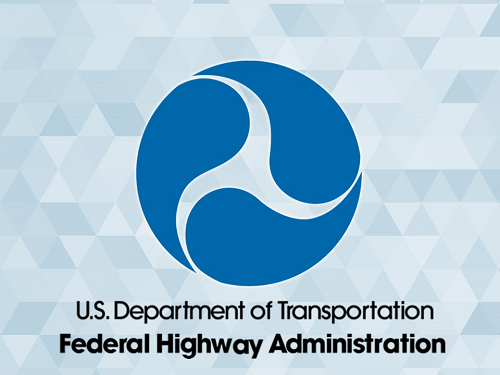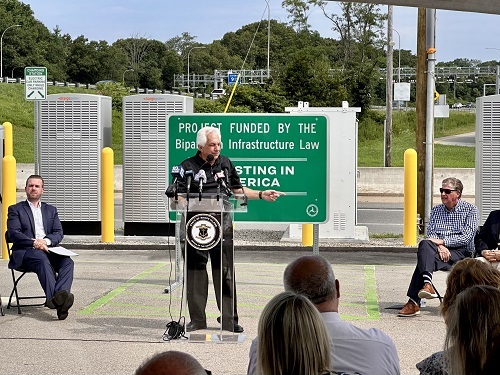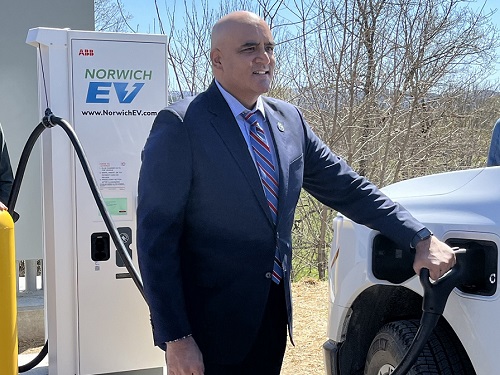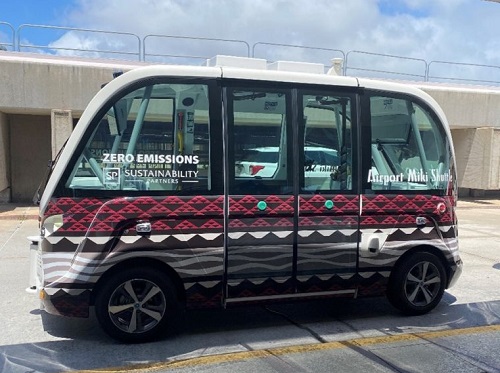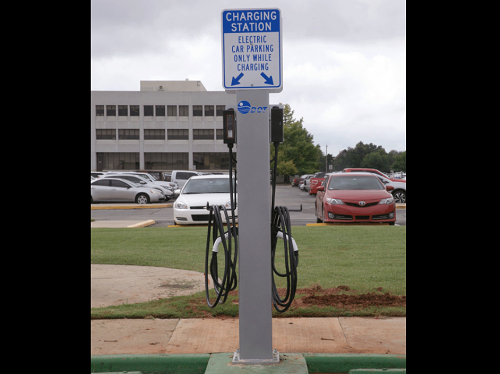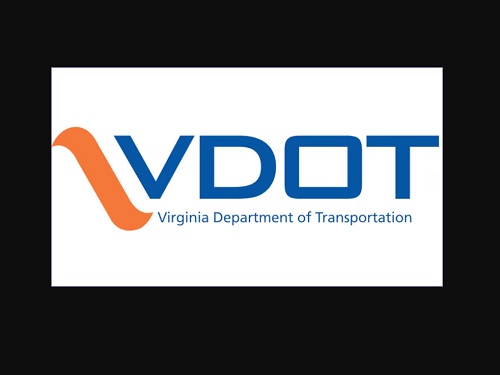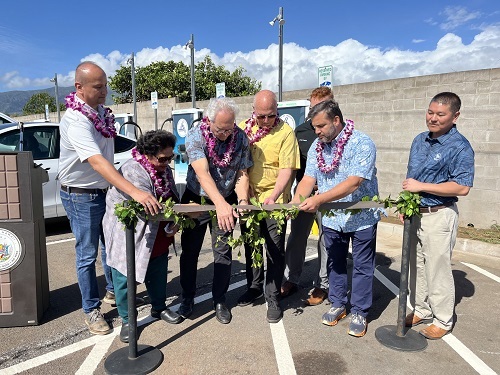The Oklahoma Department of Transportation is moving forward with the first phase of an effort to expand electric vehicle or EV infrastructure statewide.
[Above photo by Oklahoma DOT]
The agency awarded more than $8 million in federal funds to Love’s Travel Stops, Francis Energy LLC, and Tesla Inc. to build 13 charging stations along Oklahoma interstates. Those three firms will also contribute a combined $7 million in private funding to construct those charging facilities. Through this public-private partnership, the private partners will design, build, operate, and maintain the charging stations and should have them open for business by 2025.
The agency said those stations will be within 50 miles of preexisting or planned sites in designated corridors, equipped with at least four charging ports capable of simultaneous 150 kilowatt (kW) or higher charging, accessible 24/7/365, and have broadband or cellular capability.
Once installed, these 13 stations will complete the EV charging corridors on I-35, I-40 and I-44 in Oklahoma, said Jared Schwennesen, multimodal division engineer for Oklahoma DOT.
“Range anxiety is a real concern for electric vehicle owners here in Oklahoma and nationwide,” he explained in a statement. “We believe this will be a major step toward cutting down on that anxiety and providing a reliable charging network across Oklahoma.”
The Oklahoma DOT noted that the federal money it has issued to build and support those EV charging stations comes from the $5 billion National Electric Vehicle Infrastructure or NEVI formula program, established by the Infrastructure Investment and Jobs Act or IIJA.
Other state departments of transportation across the country are engaged in similar efforts.
In March, the Virginia Department of Transportation allocated $11.3 million in federal funding to assist in the statewide construction of EV charging stations that would also help close existing alternative fuel corridor gaps along I-64, I-77, I-81, I-85, I-95, and I-295.
The Illinois Department of Transportation also recently released the first official notice of funding opportunity for round one of grants sponsored by NEVI program funding; grants that will provide up to $50 million for the construction of 46 charging stations across the state.
Other state DOT EV charging network initiatives include:
- The California Department of Transportation – known as Caltrans – received some $63.7 million from the Federal Highway Administration to fix and install more than 1,000 chargers at 300 sites statewide.
- The Pennsylvania Department of Transportation plans to repair or replace dozens of existing EV charging sites using a $5 million federal award. The agency also oversaw the completion and opening of Pennsylvania’s first federally-funded EV charging station in late December 2023 and is now making $20 million in NEVI funding available to build more new EV charging facilities.
- The Ohio Department of Transportation also opened its very first NEVI-funded EV charging locale for operation in December 2023.
- The New York State Department of Transportation is getting $13 million from FHWA to enhance the reliability of EV charging ports across the state.
- The Arizona Department of Transportation began seeking bids from private entities in January to build or upgrade EV charging stations along several interstate highways.
- The Kentucky Transportation Cabinet broke ground on the first NEVI-funded EV fast charging station in the southeastern United States in February. The agency is currently seeking proposals to install up to 16 additional stations along interstates and parkways statewide using NEVI funding – all part of Kentucky’s longer-term effort to add up to 40 new fast charging stations by 2025.

